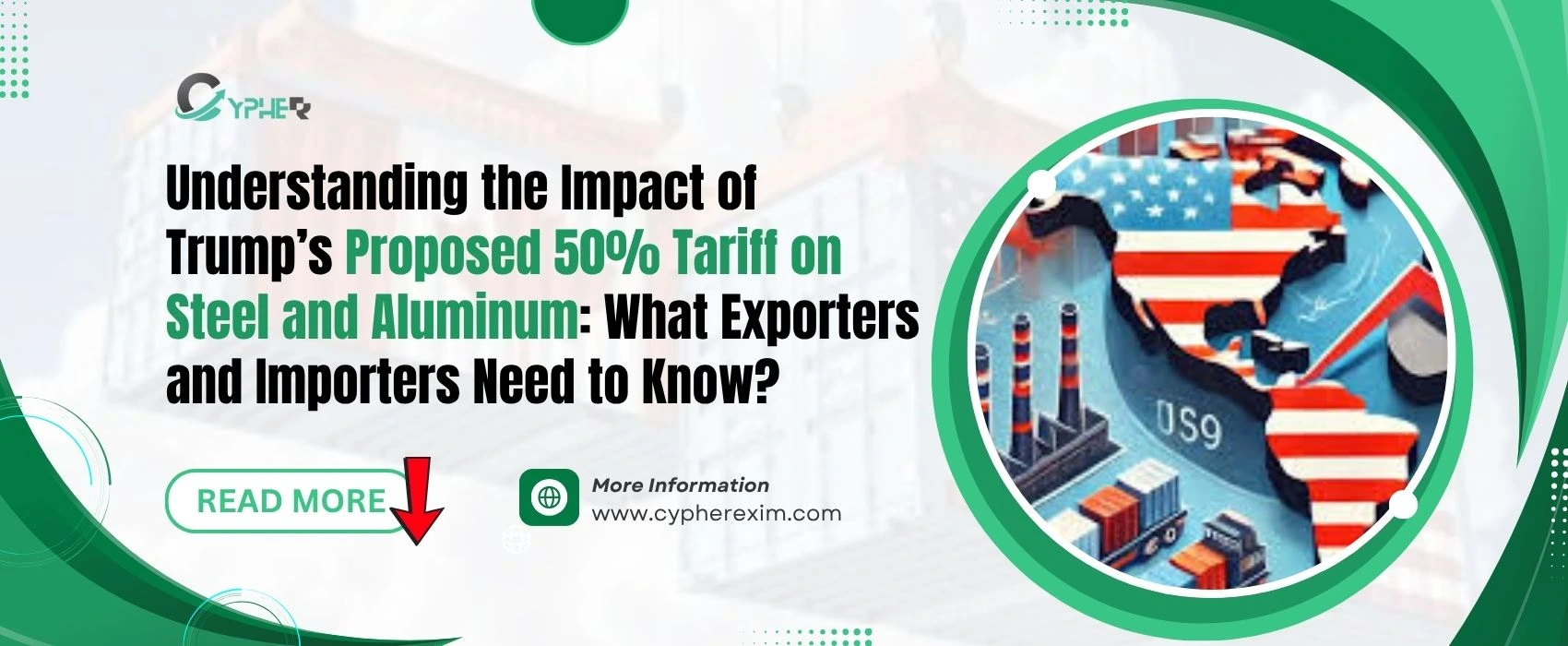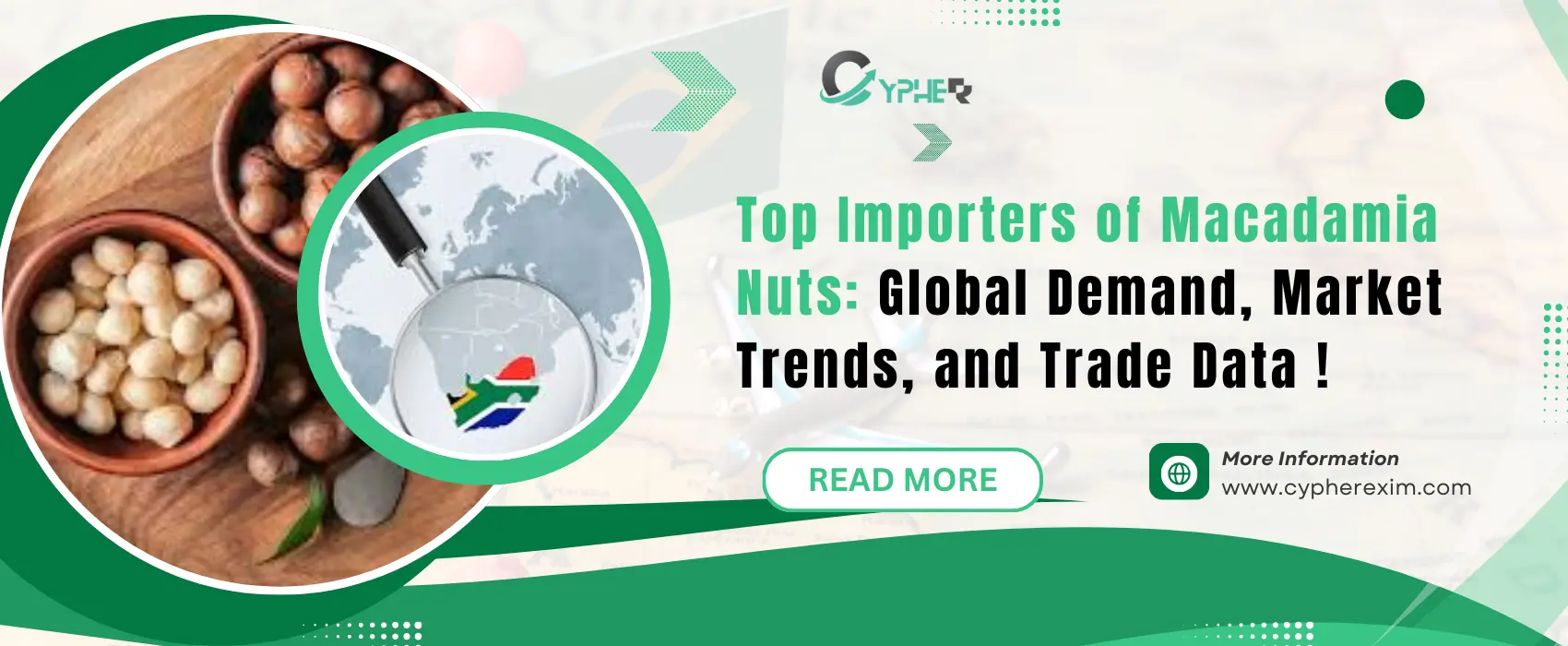Understanding the Impact of Trump’s Proposed 50% Tariff on Steel and Aluminum: What Exporters and Importers Need to Know

05 Jun 2025
President Donald Trump's administration intends to impose a high 50% tax on imports of steel and aluminium from overseas starting on June 4, 2025. This action might have a major impact on India's engineering goods exports, especially the $5 billion worth of steel, aluminium, and associated materials that are delivered to the US annually. It also doubles the current 25% tariffs. Both opportunities and challenges are presented by this policy change for importers and exporters.
What’s Happening?
Steel, aluminium, and their derivatives are the focus of the proposed tax; these products account for almost 25% of India's engineering exports to the US. Approximately $4.56 billion will be spent on these goods in 2024–2025, which include iron and steel ($587.5 million), iron and steel items ($3.1 billion), and aluminium products ($860 million). By cutting costs and boosting international competitiveness, the current 25% tariffs, which were implemented on March 18, 2025, have already made things difficult for Indian exporters. In the US market, these goods would become even more costly if the tax is doubled to 50%, which might lower demand and squeeze business margins.
How This Affects Exporters
- Higher Costs, Lower Demand: Indian steel and aluminium products will cost more in the US due to the 50% tax. The demand for Indian goods may decline as a result of American consumers looking for less expensive options from nations with lower or no tariffs. Profitability may suffer for exporters as a result of cancelled orders or pressure to reduce prices.
- Disrupted Trade Negotiations: India is now negotiating a Bilateral Trade Agreement (BTA) with the US. The timing of this tariff hike could complicate these talks, making it tougher to win favorable terms. Exporters expecting for tariff exclusions, like those granted to the UK, may face delays or uncertainty.
- Global Competition: Even though India’s direct steel exports to the US are relatively small, the tariffs have already shifted trade flows, increasing competition in other markets. A 50% tariff could intensify this, forcing exporters to compete harder in regions like Europe or Asia.
- Opportunities in Diversification: Conversely, if American consumers choose to avoid rivals like China, which is subject to much higher duties (up to 79% on electronics), some Indian exporters may profit. The ability of India to establish itself as a cost-competitive alternative could lead to a rise in demand for industries such as textiles and electronics.
How This Affects Importers
- Rising Costs for US Importers: US industries importing Indian steel and aluminum will incur greater expenses due to the 50% tax. This might lead to increased prices for construction materials, machinery, or consumer items, potentially passing costs to customers or diminishing profit margins.
- Supply Chain Shifts: In countrirs such as the UK that have reduced tariffs or exemptions, importers may search for substitute suppliers. Importers may be forced to renegotiate contracts or look for new partners as a result of this upsetting their current ties with Indian suppliers.
- Possible Benefits for Indian Importers: By encouraging Indian producers to concentrate on home markets, the tariff increase may boost the country's supply of steel and aluminium. This could increase competitiveness by lowering prices for Indian imports in sectors like construction and automobiles.
What Can Businesses Do?
Exporters:
- To counteract possible losses in the US, investigate alternative markets such as the EU, the Middle East, or Latin America.
- To stand out from the competition and defend higher prices, invest in value-added items.
- To alleviate financial hardship, advocate for government assistance, such as the reinstatement of programs like the Interest Equalisation Scheme or RODTEP for export-oriented companies.
- Keep a watchful eye on the BTA talks for any possible tariff relief.
Importers:
- Expand your supplier networks to include nations with advantageous trade agreements with the US.
- To split the cost of the tariffs, bargain for price reductions with Indian suppliers.
- To save money on tariffs, look into local US suppliers; however, this may mean paying more or sacrificing quality.
How Cypher Can Help
It takes strategic preparation and real-time insights to navigate these tariff fluctuations. At Cypher, we offer state-of-the-art export-import shipping data tools and APIs to give companies access to useful information. You can benefit from our software:
- Monitor Market Trends: Access comprehensive cargo data to track rivals' movements and discover new markets, assisting importers in locating affordable suppliers and exporters in locating alternate destinations.
- Examine the effects of tariffs: With the help of our trade flow analytics software, you can evaluate the real-time effects of tariffs on demand and pricing.
- Enhance Supply Chains: By integrating trade data into your systems using our APIs, you can make decisions more quickly and adjust to changing trade regulations.
- Keep Negotiations Ahead: Keep an eye on developments in trade agreements and how they affect tariffs to be ready for adjustments to the US-India BTA.
With Cypher’s data-driven solutions, exporters and importers can stay agile, minimize risks, and seize opportunities in this challenging trade environment. As a trusted port data supplier and leading import export data provider, Cypher delivers accurate and actionable import export data to help businesses make smarter trade decisions. Contact us today to learn how we can support your business growth and global expansion.







